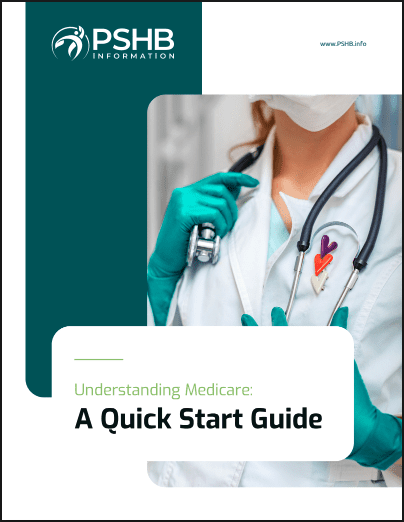Key Takeaways
-
Even if you’re enrolled in a PSHB plan, Medigap could still play a role in improving your financial protection—especially if you’re Medicare-eligible and facing gaps in coverage.
-
Understanding when and how Medigap might complement your PSHB plan requires a close look at your out-of-pocket limits, provider access, and Medicare coordination.
Understanding the Basics of PSHB and Medicare Integration
Starting January 1, 2025, all Postal Service employees and annuitants are covered under the new Postal Service Health Benefits (PSHB) Program. If you’re Medicare-eligible, particularly at age 65, you are required to enroll in Medicare Part B to maintain PSHB coverage—unless you qualify for one of the limited exceptions.
The PSHB Program is designed to work hand-in-hand with Medicare, particularly Parts A and B. Many PSHB plans reduce your deductibles, coinsurance, and copayments if you’re also enrolled in Medicare. This integrated structure can give the impression that you don’t need a Medigap (Medicare Supplement Insurance) policy. But that assumption isn’t always safe.
What Medigap Covers That PSHB Might Not
Medigap policies are specifically built to fill the cost-sharing gaps in Original Medicare. These include:
-
Medicare Part A coinsurance and hospital costs after 60 days
-
Medicare Part B coinsurance or copayments
-
Blood (first 3 pints)
-
Part A hospice care coinsurance or copayment
-
Skilled nursing facility coinsurance
-
Medicare Part A and B deductibles (depending on the plan)
-
Foreign travel emergency care (up to plan limits)
Although many PSHB plans offer excellent coordination with Medicare, they are not obligated to pay for all out-of-pocket costs that Medigap might cover. That’s where a secondary Medigap policy could step in—if it’s still available to you.
Why You Might Still Need Medigap in 2025
There are three main reasons why Medigap might still matter, even under PSHB:
1. Uncapped Cost Exposure with Some PSHB Plans
Some PSHB plans may not fully cap your out-of-pocket costs for services not covered by Medicare, especially when using out-of-network providers. Medigap plans, by contrast, follow standard federal rules and can offer more predictable cost protection.
2. Access to Non-Network Providers
While many PSHB plans use provider networks, Original Medicare combined with Medigap allows access to any provider that accepts Medicare. This freedom may matter if you live in an area with limited PSHB network access or if you frequently travel across states.
3. Standardization and Simplicity
Medigap plans are standardized by the federal government. That means a Plan G from one provider will offer the same benefits as Plan G from another. PSHB plans, however, vary widely in how they coordinate with Medicare. Some offer full wraparound coverage. Others do not.
Medigap Enrollment Timelines That Matter Now
Timing is critical when it comes to Medigap. You have a one-time Medigap Open Enrollment Period that lasts for six months, starting the first month you are both age 65 or older and enrolled in Medicare Part B.
During this window:
-
You cannot be denied coverage for health conditions
-
You are guaranteed access to any Medigap policy sold in your state
-
You won’t face medical underwriting
If you’re already in PSHB and thinking about Medigap later, you may miss this protected window. That could make future enrollment either more expensive or entirely unavailable.
What PSHB Offers That Medigap Doesn’t
To be fair, PSHB plans offer advantages that Medigap doesn’t replicate:
-
Prescription Drug Coverage: Medigap plans do not cover prescriptions. PSHB plans offer integrated drug coverage through a Medicare Part D Employer Group Waiver Plan (EGWP).
-
Comprehensive Family Coverage: Medigap only covers one individual. PSHB offers Self Plus One and Self and Family options.
-
Extra Non-Medicare Benefits: Dental, vision, hearing, wellness programs, and telehealth are often included in PSHB, but not in Medigap.
You Can’t Have Both—So What Do You Prioritize?
While you can technically have both Medigap and PSHB, it’s highly unusual and may be redundant. If you’re enrolled in Medicare Parts A and B, PSHB becomes your secondary payer. Adding Medigap would create a confusing three-tier system that may lead to claim coordination issues. Most people choose one or the other to supplement Original Medicare.
You need to prioritize:
-
Predictability of Costs: Medigap plans (particularly Plan G or N) offer standardized and transparent cost-sharing. PSHB plans vary in structure, but many cap your annual expenses.
-
Provider Access: Medigap gives nationwide access to any Medicare provider. PSHB plans often rely on networks but may offer some out-of-network benefits.
-
Additional Benefits: If you need dental, vision, or family coverage, PSHB wins. If you’re more concerned with medical cost gaps, Medigap may be a better fit—if you act during the enrollment window.
The Medicare Part B Requirement Changes the Equation
Since PSHB now requires most Medicare-eligible annuitants to be enrolled in Part B, your PSHB plan already assumes you’re paying the Part B premium. In return, many PSHB plans offer:
-
Lower cost-sharing
-
Reimbursement for part of the Part B premium
-
Better integration with Medicare’s claims process
However, not all PSHB plans offer the same level of coordination. Some still leave gaps in coverage that Medigap would fill more completely.
What to Do If You Missed the Medigap Enrollment Window
If you’ve already missed your Medigap Open Enrollment Period, options become more limited. You can:
-
Apply for a policy and go through underwriting – Approval isn’t guaranteed
-
Wait for a special guaranteed issue right – These are rare and tied to events like losing employer coverage
Because of this, it’s critical to evaluate your needs early—preferably before or shortly after turning 65.
Common Assumptions That Can Lead to Missed Opportunities
Many PSHB annuitants skip Medigap simply because they assume it isn’t necessary. Some reasons include:
-
Believing PSHB is all-inclusive
-
Not realizing PSHB plan structures differ
-
Missing the Medigap enrollment window
-
Confusing Medicare Advantage with Medigap
Each of these assumptions can cost you hundreds or even thousands of dollars in avoidable expenses later.
Medicare Advantage Isn’t the Same as Medigap
It’s also worth noting that Medigap and Medicare Advantage (Part C) are not interchangeable. Medicare Advantage plans replace Original Medicare, whereas Medigap supplements it. If your PSHB plan works in coordination with Original Medicare, Medigap might still have a role. But if you move to a Medicare Advantage plan, you cannot use Medigap with it.
This is crucial because PSHB enrollees should not assume that all Medicare coordination in their plan resembles Medicare Advantage. Read your plan’s coordination of benefits documents carefully.
Evaluating Whether a Switch to Medigap Makes Sense
Switching away from PSHB to rely on Original Medicare and Medigap is rare but may appeal to some—particularly if:
-
Your PSHB plan has high network restrictions
-
You need more predictable medical cost-sharing
-
You have no dependents relying on your plan
However, giving up PSHB could mean losing access to:
-
Employer drug coverage through EGWP
-
Family coverage
-
Additional wellness benefits
That’s why most retirees opt to retain PSHB and skip Medigap—or retain both only temporarily during a transition.
Informed Decision-Making Starts with a Plan Review
The best way to avoid regret is to do a side-by-side comparison. Use:
-
The PSHB plan brochure
-
Your Medicare Summary Notice (MSN)
-
Medigap comparison tools
-
Advice from a licensed agent listed on this website
Look at your total medical usage over the past year, including:
-
Hospitalizations
-
Doctor visits
-
Specialist care
-
Skilled nursing care
Then evaluate your out-of-pocket costs under both scenarios: PSHB with Medicare, and Medicare with Medigap.
Getting Ahead of the Next Enrollment Window
If you’re already enrolled in PSHB and Medicare but not Medigap, you may still want to:
-
Reevaluate during each PSHB Open Season (November–December)
-
Monitor changes to your PSHB plan’s Medicare coordination
-
Prepare financially in case future PSHB plans reduce benefits
Medigap isn’t something to ignore just because you’re happy with your PSHB plan now. Needs change—and so do plan terms.
Planning for the Coverage You’ll Actually Use
What matters most is how well your plan meets your actual health needs. Don’t assume that coverage will be seamless just because it’s federal. Take the time to:
-
Understand your rights under Medicare
-
Review your PSHB plan’s integration terms
-
Weigh the costs of missing the Medigap enrollment period
Your Next Step Starts with a Real Conversation
Medigap might seem like an extra layer you don’t need—but it’s more than a backup. It’s a decision with a strict timeline, lasting impact, and financial consequences. If you’re unsure whether your PSHB plan covers enough or want to know if a Medigap policy could improve your coverage, your next move should be to speak with a licensed agent listed on this website. They can review your specific needs and eligibility windows before time runs out.










